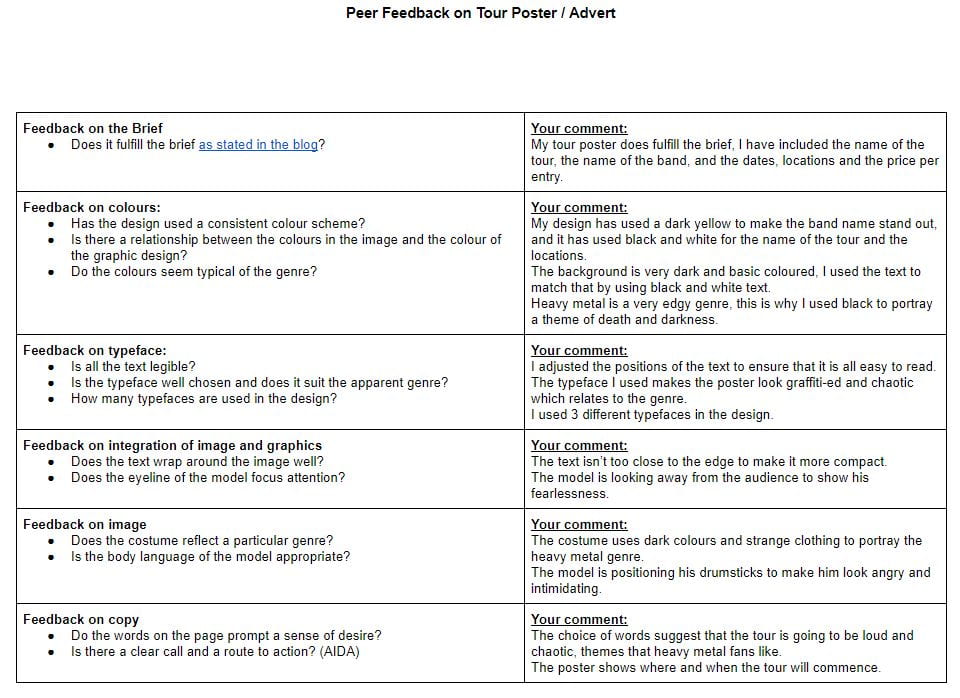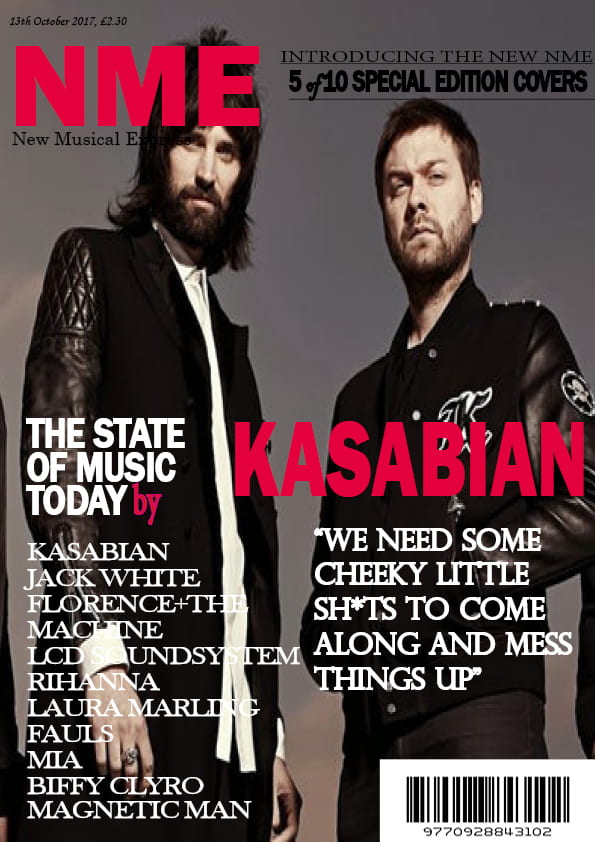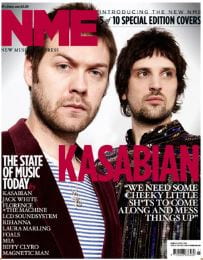My Tour Poster
Researching Heavy Metal tour posters has allowed me to have more of an understanding on the colour palettes, fonts, and conventional features used to address the target audience.
These features which I wish to add to my poster include big bold writing with a particularly messy font to make the poster look more edgy.
I would like the picture of the band/performer to look as angry or as intimidating as possible, I am going to include a dark background to add a theme of death, since that’s what the heavy metal genre is all about.
This is my heavy metal tour poster. Using my research I discovered that Heavy Metal posters have a very dark and basic theme to them, I used these emotions to select my background of an abandoned town at night to add an edgy theme to it.
I made this poster unique by using a variety of colour schemes, the name of the band is in bright yellow so the audience know who is performing. I also used very messy fonts to make it look as though the poster had been graffiti-ed.
I included the dates and locations so the audience knows where the tour is taking place, I named the tour ‘Northern Carnage’ and based it in the Northern area of the UK.
The action in this poster relates back to AIDA. The main cover star is alone in this dark and lonely town, he is holding drum sticks to show that he is a band member, and his dark and edgy clothing shows that he is a heavy metal artist.
I like how this poster portrays a chaotic theme using the messy fonts and the angles of the text. One criticism I have for this poster is the lighting on the cover star, I wish I could’ve made the left side of his face darker like the background.
This task will help when designing my music magazine as I have improved my skills in Indesign and Photoshop, I have learned how to use different colours and fonts to portray a theme, and I have also identified how to use conventional features to make a tour poster more attractive.









